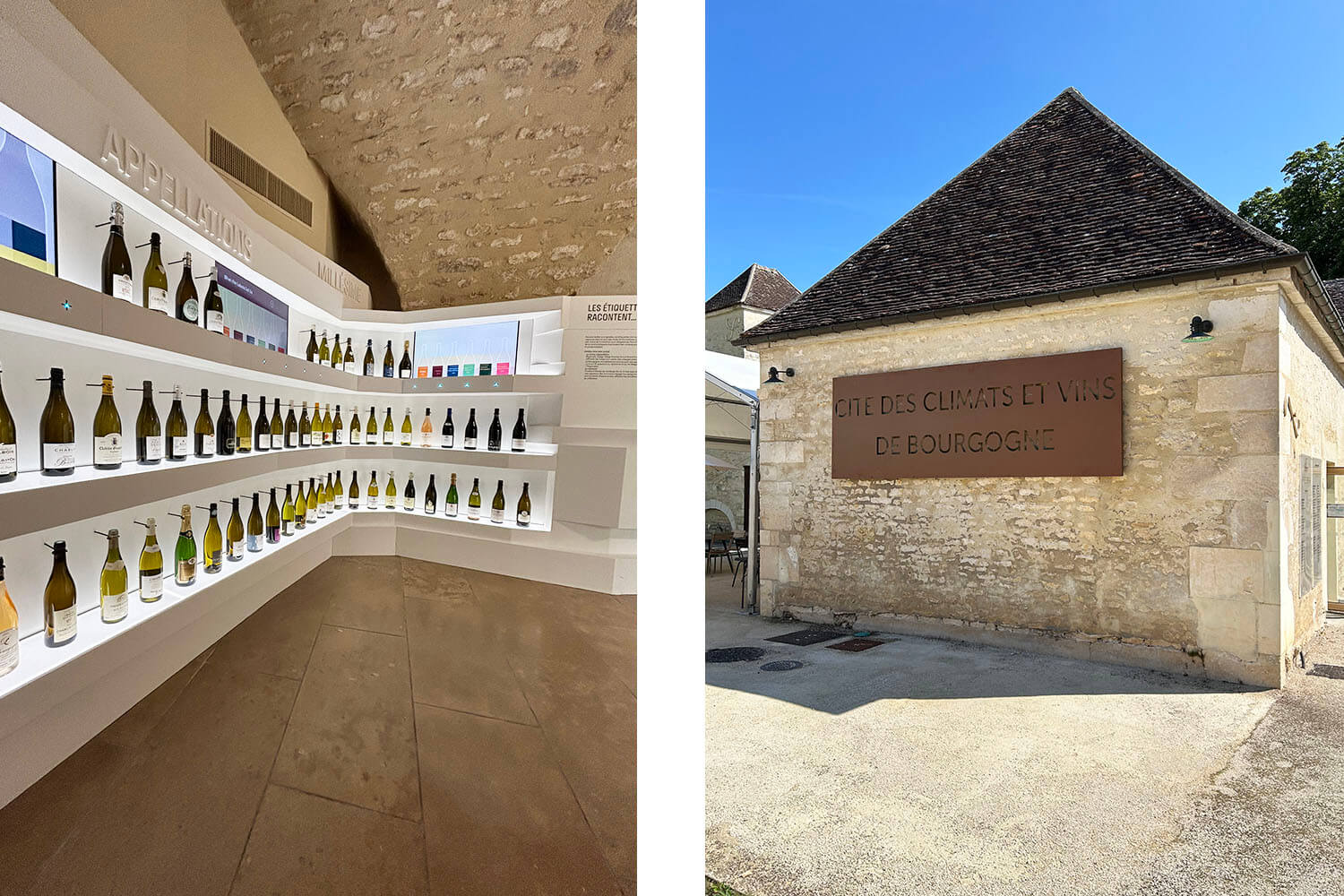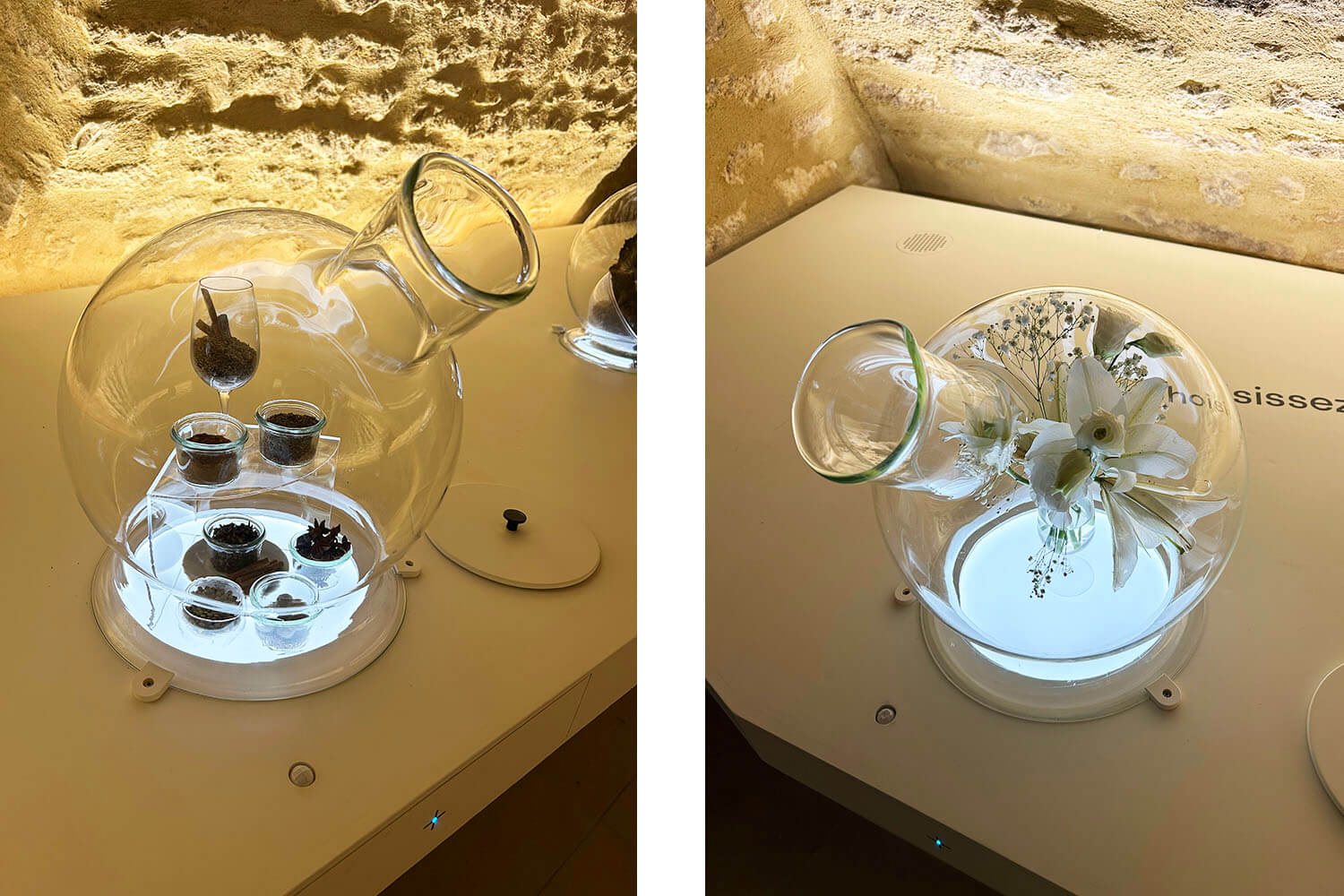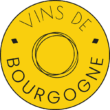Wine is more than taste alone. It is a world of aromas that evoke memories and associations and reveal the identity of a terroir. In Burgundy, which is all about Chardonnay and Pinot Noir, aromas play a leading role. While visiting the Cité des Climats et Vins de Bourgogne in Chablis, we discovered the Cave aux Arômes – a place where the 12 main aroma families of Bourgogne wines can be smelled and recognised. Which 12 aromas can be found in Bourgogne wines?

1. Florale, Fleurs Blanches (floral, white flowers)
Chardonnay can give off scents of white blossom, acacia or honeysuckle, while Pinot Noir is sometimes reminiscent of roses or violets. These floral notes add to the elegance and are actually found in all wines.
2. Fruits Frais et Argrumes (fresh fruit and citrus)
From fresh citrus and apple in Chablis, to ripe cherries and raspberries in Pinot Noir: fruit often forms the basis of the aroma. With ageing, these fruit notes can evolve towards dried fruit.
3. Fruits Confits (candied fruit)
Plums, jam, pickled fruit or orange peel. These aromas often come from age. Think Gevrey-Chambertin, Mercurey or Aloxe-Corton.
4. Fruits Rouges, Fruit Noirs (red and black fruits)
Cherry, raspberry, blackberry or plum, for example. These aromas are common in young Pinot-Noirs as they are actually made all over Burgundy. This is a very primary family of aromas.
5. Fruits Secs (dried fruit)
Fig, apricot but also hazelnut or even pistachio. These are characteristic aromas that can be found in many Bourgognes. It often indicates the use of new oak. Think of Meursault, Chablis Grand Cru, Saint-Véran and countless other white Bourgognes (aged in oak).
6. Confiserie (confectionery)
Honey, caramel, marzipan or liquorice. Often found in wines made from very ripe Chardonnay grapes. This is a characteristic of the better wines from Burgundy. Think, for example, of Chablis Premier Cru, Chablis Grand Cru or a Montagny Premier Cru.
7. Épicé (spicy)
Pepper, thyme, cloves or nutmeg often come from barrel aging or bottle aging. Especially in powerful red wines, spices add complexity. Think Gevrey-Chambertin, Irancy or Chassagne-Montrachet.
8. Vanilla, Bois de Chêne (vanilla, oak)
Contact with oak produces aromas of vanilla, toast, brioche or cedar. In white Burgundy, such as Meursault or Puligny-Montrachet, these notes enhance the structure. These aromas are common, in fact in most wines aged in oak.
9. Empyreumatique (toasty/smoky)
This includes aromas such as coffee, cocoa, caramel or toasted almonds. They come from barrel aging or maturation on lees. These are often wines aged in new (oak) barrels.
10. Animale (animal)
Leather, fur or even fleshiness often appear in older Pinot Noirs. They add depth and authenticity. Think of a Pommard or Nuits-Saint-Georges with some age.
11. Sous-bois (forest land)
Mushrooms, humus, moss and autumn leaves develop over the years in the bottle and are loved in classic Côte de Nuits wines. Think Morey-Saint-Denis or Vosne-Romanée.
12. Fermentaire, Petit Lait (milk, whey)
Butter, cream or yoghurt are typical aromas resulting from malolactic fermentation, often present in (young) Chardonnays.

The discovery of aromas makes tasting a Burgundy richer. Whether you enjoy a young, fruity Pinot Noir or a ripe Chardonnay with notes of butter, honey and toasted oak, each bottle tells its own story. The 12 aroma families are like a compass. Those who want to delve further will find a unique experience in the Cave aux Arômes at the Cité des Climats et Vins in Chablis: smelling, recognising and remembering what makes Burgundy wine so special.
